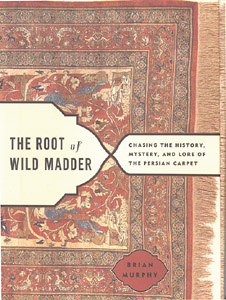![[whitespace]](/gifs/whiteline2.gif) |
Book Box

The Algebraist
Iain M. Banks offers up some fascinating ideas and runs with them in his latest stand-alone science fiction novel. One of the true pleasures of reading space opera is the reader's slowly unfolding understanding of the universe created by the author. Banks lays out and layers his presentation of a civilized universe with consummate skill. The Algebraist manages just the right combination of "What the hell?" and "Oh, my God!" revelations as to how things work. Banks knows when to zoom in and when to pan out; he goes from microscopic to telescopic as the situation demands. The plot, which naturally finds protagonist Fassin Taak in a race to prevent the end of life as he knows it, grips the reader in the opening and moves at a steady, entertaining clip. But where Banks really shines is in his ability to evoke subtle, satiric swipes at the world we know within the universe he creates. Great characters and witty dialogue are the reasons. Banks' best creation is the race he calls the Dwellers: ancient creatures who experience time much more slowly than humans. They provide space slapstick utterly unlike the broad satire readers are used to in humorous science fiction. The humor comes out of character and dialogue; the satire out of intricately conceived societal relationships. Banks doesn't stint on the awe and wonder however, nor does he hold back from full-scale space battles that have yet another twist of imagination and invention. The set pieces in this novel are exciting, visually grand and quite inventive. If you've not read Banks, or any space opera, then The Algebraist is a fine place to begin. It successfully presents readers with nothing less than a universe—with a few well-placed laughs. (By Iain M. Banks; Night Shade Books; 434 pages; $24.95)
—Rick Kleffel

The Root of Wild Madder: Chasing the History, Mystery and Lore of the Persian Carpet
Foreign correspondent Brian Murphy's fascinating hajj to Iran and surrounding carpet-weaving regions takes its title from the evocatively named madder plant, from which is extracted the best natural red dye. The dye from this "leafy little plant" is so strong, the author notes, that it "can turn our bones red." Murphy's obsession with hand-woven Persian rugs is bone-deep, even if he starts out as an amateur in a field in which even experts can be fooled by clever copies. Seduced by both the beauty and the history of these intricate weavings that he calls "one of the great crossroads of ... fundamental spiritual and creative yearnings," Murphy seeks the guidance of merchants in the Tehran bazaar, quizzes historians, visits women weavers at their looms in remote villages—and snags a few finds of his own. Not a buyer's guide to patterns and prices, the book is a historical and cultural study of how a folk tradition struggles to survive in a modern marketplace. Although they are making a bit of a comeback, natural dyes have been supplanted by chemical ones, and pre-ordered patterns outsell indigenous iconography. The urge is understandable—to many poor villagers a single carpet sold to a European buyer can be a windfall—but Murphy understands the quality of loss when a tribe's memories succumb to globalization. Ultimately, the Persian rugs Murphy pursues are more than a commodity; they "possess unbroken links to the earliest forms of expression and self-awareness." (By Brian Murphy; Simon & Schuster; 287 pages; $25 cloth)
—Michael S. Gant
Send a letter to the editor about this story to letters@metronews.com.
[ Silicon Valley | Metroactive Home | Archives ]
|
![[Metroactive Books]](/books/gifs/books468.gif)

